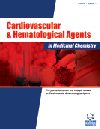
Full text loading...
We use cookies to track usage and preferences.I Understand
In recent years, there has been increasing global concern about the rising prevalence and rapid progression of psychosomatic disorders (PD). This surge can be attributed to irregular biological conditions and the increasingly stressful lifestyles that individuals lead, ultimately resulting in functional impairments of vital organs. PD arises from intricate interactions involving the central nervous, endocrine, and immune systems. Notably, the hypothalamic-pituitary-adrenal (HPA) axis plays an essential role, as its dysregulation is influenced by prolonged stress and psychological distress. Consequently, stress hormones, including cortisol, exert detrimental effects on immunological function, inflammation, and homeostatic equilibrium. It emerges as physical symptoms influenced by psychological factors, such as persistent pain, gastrointestinal disturbances, or respiratory complications, and is pertinent to highlight that excessive and chronic stress, anxiety, or emotional distress may engender the onset or exacerbation of cardiovascular disorders, namely hypertension and heart disease. Although several therapeutic strategies have been proposed so far, the precise etiology of PD remains elusive due to the intricate nature of disease progression and the underlying modalities of action. This comprehensive review seeks to elucidate the diverse classifications of psychosomatic disorders, explicate their intricate mechanisms, and shed light on their impact on the human body, which may act as catalysts for the development of various other diseases. Additionally, it explores the inherent medico-clinical challenges posed by PD and also explores the cutting-edge technologies, tools, and data analytics pipelines that are being applied in the contemporary era to effectively analyze psychosomatic data.

Article metrics loading...

Full text loading...
References


Data & Media loading...

